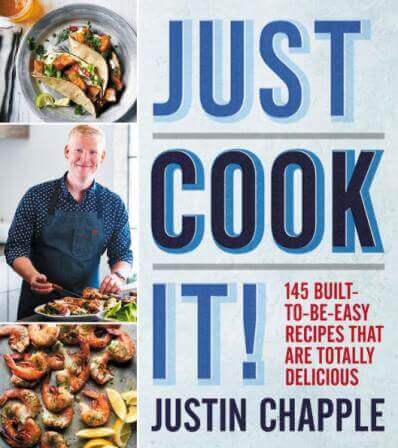
When I finally became pregnant after years of infertility treatments, my mind excitedly jumped between thoughts: How would we announce the big news to our friends and family? How would I have the quintessential birth experience?
Instead of wondering how many pickles I might crave or if I'd be hit hard with morning sickness—uh, yes, was I ever!—my mind raced feverishly to those last hours of my ninth month where I would be in tip-top pregnancy health and would be in complete control of every contraction and decision that would affect my voluptuous body until my precious bundle of joy entered the world. All in a calm, serene setting, of course.
I chuckle now, eight kids later, when I recall how I lived in awe of the anticipation of all that could or would happen to my growing body, as well as the total emotional journey I experienced throughout my first and subsequent pregnancies. Each and every pregnancy was different for me, both physically and emotionally, but one thing that remained constant each time I learned I was pregnant was that I would always visualize the end result: delivering the healthiest, most adorable baby under the best possible circumstances.
It’s been 12 years since I’ve been to the delivery room, and although I was a frequent flier for nearly a decade I still love connecting with expectant and new moms to share in their miraculous birth stories. It just never gets old for me!
Whether you’re expecting, thinking of becoming, or trying to become pregnant, or just love all things pregnancy like I do, you might be interested to learn about these five interesting trends that women and their partners can experience during labor and delivery.
5 Ways Childbirth is Changing
- Gentle Cesarean Section
- Dancing To Stimulate Labor
- Being Camera Ready
- Crowd Birthing
- Birthing Apps and Podcasts
Here is each trend in more detail.
1. Gentle Cesarean Section
I never had a Cesarean section with any of my deliveries, yet statistics show that 1 in 3 babies are born via C-section. According to a study done by the Centers for Disease Control (CDC) in 2016, 31.9% deliveries were C-sections. There are several reasons—chronic health conditions, multiple births, problems with the placenta—for delivering through this surgical procedure, in which the baby is born through a cut that your doctor makes in your belly and uterus. Your doctor or midwife will present the case for a C-section birth during your pregnancy care if it becomes the best option for delivery.
The traditional stories one hears of a C-Section delivery aren’t always warm and fuzzy. The baby is born in the OR (operating room) in a very sterile and clinical environment. Mom has monitors attached to her arms and chest throughout the procedure and can’t see anything because a large, blue drape hangs between her chest and stomach. Her partner is seated next to her head but is also in the dark to the actual birth until the baby is surgically delivered and whisked off to another section of the OR, where pediatricians will do evaluations. Then, many minutes later, mom will meet her baby for the first time when either a nurse or her partner give her a peek.
Thanks to Dr. William Camann, director of obstetric anesthesia service at Brigham and Women's Hospital in Boston, the process of Cesarean delivery was tweaked so that the new mother could be more visually involved during the birth. He envisioned using a clear drape rather than a blue one so that mom could watch the birth and be a part of the experience.
That was ten years ago and was the catalyst for others in the medical profession to follow suit. Soon after the term gentle C-section was coined. Now women who need to deliver via C-section can try and incorporate this calmer, tender approach to their delivery. Some of the gentle aspects that C-section parents can expect are soothing music being played during the birth, aromatherapy, and skin-to-skin contact immediately after delivery because mom’s chest will be freed of the usual monitors during surgery as they will be placed beside her.
If you’re expecting and are curious to know if your hospital is on trend with the “Gentle C” be sure and ask your health care provider for more details.
2. Dancing to Stimulate Labor
A few months ago, I stumbled upon a fantastic youtube video of a pregnant woman dancing in the delivery room alongside her OB GYN to a very catchy pop tune, "Paradinha" by Brazillian singer Anitta. This video soon went viral because the OB had not only choreographed the dance, he was right there by his patient’s side dancing with her. I highly recommend you check it out—it will definitely make you smile.
The force behind this dance, which included squatting and fun arm and leg movements, is part of a care practice known as freedom of movement throughout labor. The Journal of Perinatal Education states “Freedom of movement is important in making the birth of your baby easier. It is the best way for you to use gravity to help your baby come down and to increase the size and shape of your pelvis. It allows you to respond to pain in an active way, and it may speed up the labor process.”
Even if you haven’t been to a club in ages, you might want to put your dancing shoes on when those first few contractions begin—lots of women are on board with getting their groove on to have a little fun when it's showtime.
3. Being Camera Ready
Today’s babies are not only being born with cutting-edge medical technology, they are also coming into this world being streamed on social media venues. My eight babies were born between 1993 to 2005—we actually had a Polaroid Instant camera for the first birth and had a video camera the size of a small TV. After our first few kids were born, my husband had to rush out to the local pharmacy to get prints made that we’d taken with our Kodak camera.
Today—wow, has that all changed! Now we have live photos, videos, announcements, and play-by-play details of every event happening in our lives thanks to our smartphones and the ability to connect to our favorite social media channels.
And because we have instant access to capture all these milestone moments, including the ability to take dozens of selfies, more and more moms-to-be are wanting to primp for the camera, despite what kind of pain she is in, so that when she and that beautiful new baby meet the rest of the world, she looks great.
I’ll sheepishly admit that I totally relate to this scenario. Since our first baby was born to us through adoption, I was able to arrive (though overwhelmed with emotion) at the hospital to meet our daughter wearing a super cute outfit and not a hair out of place. I rocked those first few new mommy photos, and to this day when I look at them, I get teary eyed but still pat myself on the back for having a great hair day. Now, one year later, the story all changed when I delivered our first son, after 28 hours of labor and nearly three hours of pushing. I walked into the hospital wearing yet another super cute outfit (that I specifically bought to wear when I went into labor—sigh!), and had actually spent 45 minutes, during contractions, blow-drying my hair and applying my make-up so I could look fresh and perky at the hospital. (I know—ridiculous!)
I won’t lie—even when I was in hard labor, I managed to reapply my lipstick. Yet, when pushing began—everything changed. My blonde bob of a cut was now soaking wet and plastered to my head and my sergeant of a delivery room nurse looked me in the eyes and said “Honey—lose that hair bow—this isn’t a beauty pageant!”
Those new mommy photos with my son look nothing like me, but I accepted there was no way to look anything other than exhausted and elated that I had finally given birth.
Trending now, however, is a way to help new moms look their best right after delivery. The New York Times is now reporting that women pre-book a team of stylists—specifically hair and makeup pros—to come to their hospital rooms for the purpose of getting the new moms camera-ready for their first photos with their babies.
The more the merrier is the new concept in “crowd birthing,” where the parents-to-be invite a small army, perhaps eight to ten of their closest family and friends to witness their baby’s arrival.
In a New York Times Fashion & Style article, John Barrett, founder of Bergdorf Goodman, was quoted as saying, “For some new mothers, the treatments offer an emotional boost as well as an aesthetic one. “It’s really important that you feel good, that you don’t look in the mirror and say, ‘Oh, my God,’ because having a baby is like running a marathon. Just feeling ‘I look normal’ afterward is such a nice thing. It’s good for the psyche.”
So if you feel the need to look glamorous and put together after delivery, keep this fab trend in mind!
4. Crowd Birthing
To some people, the adage “two’s company, three’s a crowd” rings true for many occasions. Not so in some delivery rooms.
For many couples, gone are the days when an intimate birth experience was shared between themselves and their new baby. The more the merrier is the new concept in “crowd birthing,” where the parents-to-be invite a small army, perhaps eight to ten of their closest family and friends to witness their baby’s arrival.
This is such a personal choice for couples to weigh in on. Personally, I couldn’t imagine having one of my brothers or my father-in-law watching me give birth, but for many woman they feel there is strength in numbers. Having a support system of several people to lean on can help to relieve stress and keep the laboring mom more focused and relaxed. If you think a few more warm and familiar faces surrounding you when the big day comes is for you, be sure and check with your health care team and hospital to see if delivery room parties are good to go.
5. Birthing Apps and Podcasts
Today, we have a fantastic selection of apps and podcasts for everything from saving money, educational topics, to handling life's challenges, so why not have birthing apps and podcasts at our disposal to help us with all things pregnancy and delivery?
Technology in the 21st century has made it very easy to be pro-active in your pregnancy and birth. One of the greatest features of using these tools is that you can access the information almost immediately on your smartphone, laptop, or iPad.
I have several friends and colleagues that are expecting babies this summer. Here are a few of the apps and podcasts they can’t live without.
The Bump: This pregnancy and baby editorial app includes articles that cover all your symptoms and developments.
What to Expect: This app is from the popular “What to Expect” series and covers everything from taking your pregnancy test to taking your baby home from the hospital or birthing center.
Pregnancy +: This app shows interactive images of every stage of your pregnancy.
The Birthful Podcast: The host of this podcast, Adriana Lozada, talks with other birth professionals to share everything from breastfeeding to bed-sharing to vaginal birth after C-sections.
The Cord Podcast: This podcast is hosted by Amy Neuhedel who is very enthusiastic about pregnancy and delivery. The Cord is a collection of helpful tips and interviews with birth professionals, and moms who are pregnant or have delivered.
What type of delivery experience have you had or hope to have? Share your thoughts in the comments section at quickanddirtytips.com/mighty-mommy, post your ideas on the Mighty Mommy Facebook page. or email me at mommy@quickanddirtytips.com. Visit my family-friendly boards at Pinterest.com/MightyMommyQDT

 Order Ellen's book
Order Ellen's book 

 One of my biggest pet peeves in life is tardiness. I hate it when other people are late. It’s as if they are not respecting my time. But you know what? I hate being late myself even more. In fact, I cringe at the thought. Conscientious, successful people are on time.
One of my biggest pet peeves in life is tardiness. I hate it when other people are late. It’s as if they are not respecting my time. But you know what? I hate being late myself even more. In fact, I cringe at the thought. Conscientious, successful people are on time.
 The next patient is a hospital follow-up. An 87-year-old woman who suffered a stroke since Dr. Tardy last saw her. She is now unable to speak clearly and requires a family member’s presence to help facilitate the visit. The doctor also needs to request the records to be transferred over from the hospitalization in order to get the medical details.
The next patient is a hospital follow-up. An 87-year-old woman who suffered a stroke since Dr. Tardy last saw her. She is now unable to speak clearly and requires a family member’s presence to help facilitate the visit. The doctor also needs to request the records to be transferred over from the hospitalization in order to get the medical details.
 Dr. Tardy’s next patient is a 58-year-old woman with diabetes. She comes to Dr. Tardy for her 3-month follow up and to discuss
Dr. Tardy’s next patient is a 58-year-old woman with diabetes. She comes to Dr. Tardy for her 3-month follow up and to discuss  Dr. Tardy, having a great sense of intuition, suspects that there may be something deeper going on and works hard to get the patient to open up.
Dr. Tardy, having a great sense of intuition, suspects that there may be something deeper going on and works hard to get the patient to open up.  If not, then do we fault the current health care system model in the United States which underpays primary care doctors for each visit so that they are required to see more and more patients in a shorter amount of time? Do we blame the medical practice that requires 20-minute appointment slots for each patient in order to survive? Should they stop allowing patients to be 15 minutes late in order to maintain good business practices?
If not, then do we fault the current health care system model in the United States which underpays primary care doctors for each visit so that they are required to see more and more patients in a shorter amount of time? Do we blame the medical practice that requires 20-minute appointment slots for each patient in order to survive? Should they stop allowing patients to be 15 minutes late in order to maintain good business practices?



